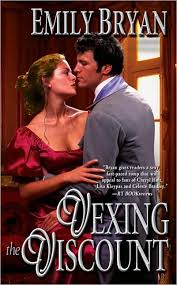Should a book’s name and cover art matter so much?

“You can’t judge a book by its cover.”
Oh, really? Have you scanned the covers of the romance novels that populate the bestseller lists, particularly those devoted to self-published eBooks on Amazon and other Internet outlets?
(Don’t worry, dear reader, this isn’t going to be another pro-Amazon, anti-legacy-publisher screed. This will be an erudite commentary on some of the basics of book publishing and marketing in general.)
Back to those romance novels. Unless you are suffering from a terminal case of macular degeneration, a book cover showing a long-haired, muscular young man ripping the clothes off a sultry and bosomy woman should give you a pretty good idea of the prose you will find within.
In case you are still in doubt, try these recent titles on for size: The Earl’s Inconvenient Wife; Marcus Wilding: Duke of Pleasure; How to Catch a Wild Viscount; The Desperate Love of a Lord; The Earl’s Desire; and Dukes for Dummies.
Okay, I made that last one up, but you get the idea.
The “Bodice Rippers,” as these purple-prosed books are called, are hugely popular, both in print and online. In addition to the catchy titles (did earls, lords, dukes, and “wild” viscounts really get that much action? It would certainly explain why England lost India), many of the covers are works of art and could be hung in, say, the lounge of a local Holiday Inn.
The world is awash in books, and except for those (print or otherwise) which are heavily advertised or promoted, or whose innate quality generates enough word of mouth to insure success, most need a lot of help to get noticed. Thus, their authors strive for unique covers and catchy titles.
I know I strive. And I’m constantly tinkering with my sales model. I write thrillers and mysteries, and my early covers and titles were probably too dark. The cover art featured lots of weapons, and I used the word “blood” too often in the titles, which probably convinced people I was trying to cash in on the vampire craze. (Not that I wouldn’t have loved to.)
The blood and weapons are mostly gone, at least on the outside. Handsome men and women (bodices intact!) now dominate my cover art, on the assumption that more readers might be attracted to them — rather than to a stiletto dripping blobs of gore (yes, that was an old cover; go figure).
Even though all the inspired titles have apparently been taken by romance novelists (see above), I enjoy coming up with my own. And I have learned a few tricks. It seems that any book with the word “Conspiracy” in its title often sells better than its peers. I’ve only used it once. In my other books, I’ve been hampered by the fact that you can’t use the word if there isn’t an actual conspiracy involved in the plot.
Unless your desire is to write that one great novel that will be remembered forever and result in having many high schools named after you, you should think about giving your books a chance of success by learning what readers like — both on the inside and outside of those books.
I don’t mean to imply that an author should tailor his or her work to fit a fad, or to squeak it into a genre it doesn’t belong. In the end, it’s quality and integrity that count. We shouldn’t sell out just to make a few extra bucks.
Well, enough for now. I have to finish my latest thriller, The Bodice-Rippers Conspiracy.
Lawrence De Maria, a former Pulitzer-nominated New York Times journalist, has published 11 eBooks on Amazon.com. His most recent thriller, The Hadron Escape, featuring CIA apex assassin Cole Sudden, has just been released. He knows that “escape” is also a good word in a title.

